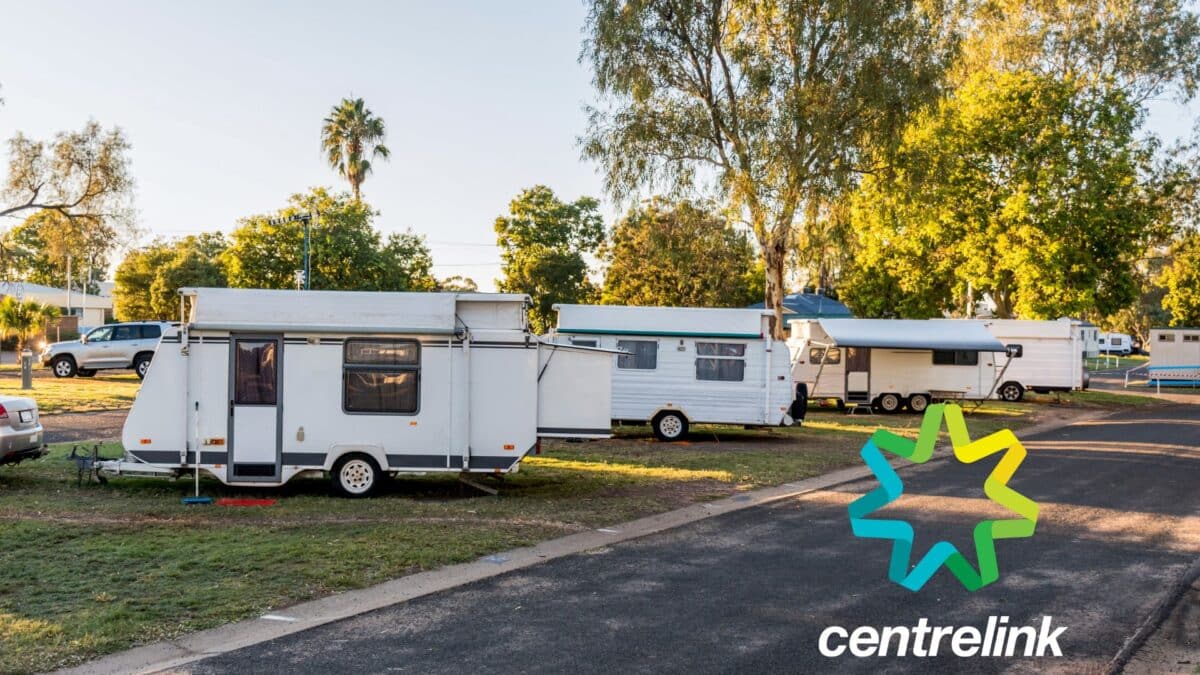Australians who live in caravans, boats, or relocatable homes face unique challenges when it comes to Centrelink payments. With the number of individuals adopting a mobile lifestyle increasing, Services Australia has clarified how these Australians are treated under Centrelink’s income and asset tests. While there are some exemptions and considerations that may affect eligibility, many caravan dwellers will not see changes to their payments.
The 2021 Census revealed that around 58,000 Australians live in caravans, a number that reflects a growing trend in mobile living, especially after the pandemic. As more people embrace life on wheels, understanding how Centrelink payments apply to this group is vital for ensuring they receive the support they are entitled to.
Understanding the Centrelink assets test for mobile homes
For Centrelink payments, the assets test typically examines the value of a person’s property. However, individuals who live in caravans or boats are not treated the same as those who own a fixed home. If the caravan or boat owner does not own the land or mooring where the mobile home is located, the vehicle itself is not considered an asset.
Justin Bott, a Services Australia community services officer, explained that those living in a mobile home are still considered homeowners, but only the home itself is considered for the assets test. The land or mooring is excluded, meaning it does not affect eligibility for payments such as the Age Pension or Disability Support Pension.
When does ownership of land or mooring affect payments?
The situation changes when the land or water on which the mobile home sits is owned by the resident. In these cases, up to two hectares of land around the dwelling can be exempt from the assets test, but the overall value of the land can still impact eligibility for certain payments. If the owner possesses more land or water than this limit, the property could be considered part of their assets.
In addition, Australians who own their caravan park site or mooring location may not qualify for Commonwealth Rent Assistance (CRA), which is designed to help with housing costs such as rent or site fees. This is a crucial distinction for people who rely on CRA to help pay for their living expenses.
Centrelink payment warning for thousands of caravanning Aussies: 'Won't affect' https://t.co/wCpti55Tkn
— Yahoo Finance Australia (@YahooFinanceAU) June 22, 2025
Caravanning becoming more popular
The number of Australians living in caravans has been steadily increasing, particularly since the pandemic. According to the 2021 Census, there were 58,155 individuals living in caravans, alongside 29,369 people in houseboats or cabins. This surge reflects the growing trend of Australians exploring domestic travel and choosing alternative lifestyles over traditional homeownership.
This increase in caravanning has not only led to a greater number of people adopting a mobile lifestyle but has also raised questions about how Centrelink policies apply to those living in non-traditional housing arrangements. As the popularity of mobile living continues to rise, it is crucial for individuals in these circumstances to stay informed about how their living arrangements may impact their eligibility for Centrelink support.
Implications of upcoming Centrelink
changes
As of July 1, Centrelink is set to introduce changes to the age pension. These changes could have significant effects on those who live in caravans or mobile homes. People living in non-traditional housing may find themselves needing to undergo more detailed asset and income tests to qualify for the pension, especially as new regulations come into effect.
Given these upcoming changes, it is important for those living in caravans or mobile homes to regularly review their Centrelink eligibility. Understanding how their mobile home or caravan is assessed will help ensure that they do not miss out on benefits they may be entitled to.









